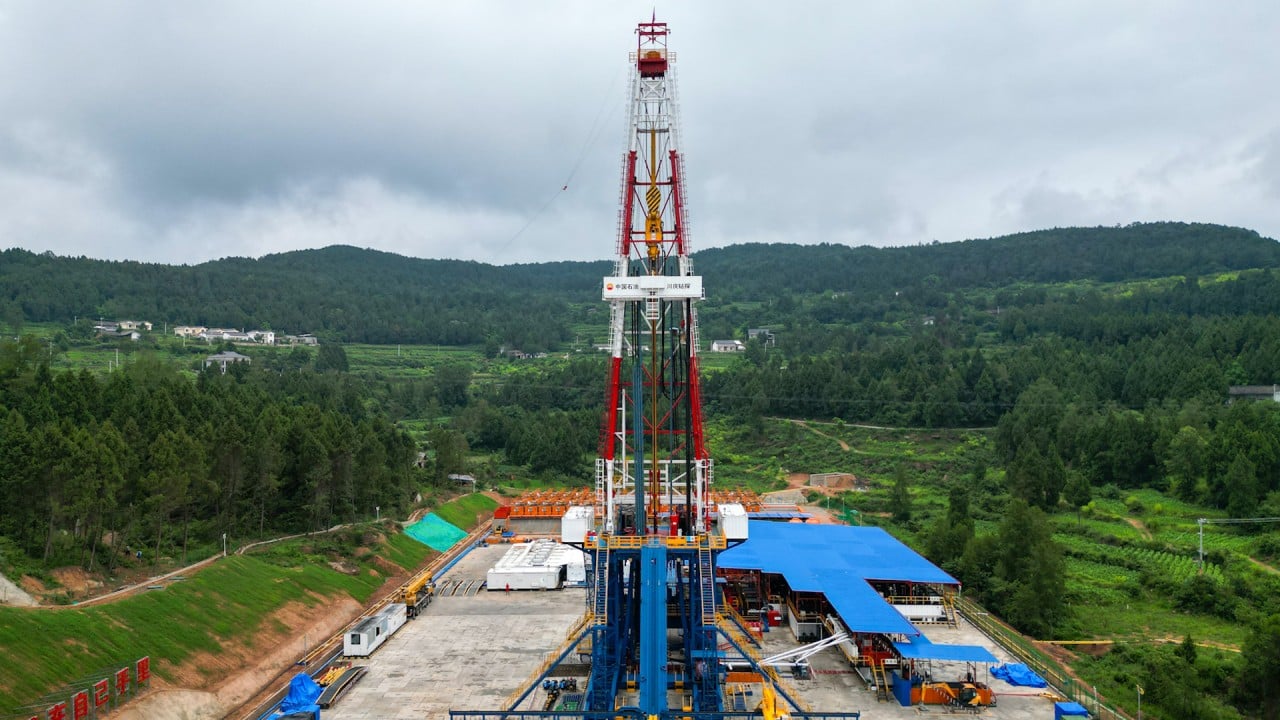
China’s permafrost damaged by oil pipelines could trigger ‘environmental disaster’, study warns
- Pipeline mega project carrying heated crude oil is gradually degrading large areas of permafrost, increasing geohazard risks, scientists say
The parallel CRCOP I and II (China-Russia Crude Oil Pipelines) run mostly underground across hundreds of kilometres of permafrost and seasonally frozen ground. But to transport crude oil across a frigid environment, the liquid hydrocarbons must be kept at a temperature above freezing point.
According to researchers, that is becoming a problem.
Over time, the warmer pipeline oil has thawed the upper layer of the permafrost it runs through in northern China. The resulting degradation to the permafrost could lead to geohazards and environmental disasters, a new study has found.
“As a persistent heat source, it continuously releases heat into the surrounding permafrost, leading to permafrost thawing, surface subsidence, surface ponding, pipeline settlement, possible failures or oil spills, and possibly future environmental disasters,” the research team led by scientists at the University of Chinese Academy of Sciences wrote.
To study the impact of the pipeline, the researchers used a combination of methods, including ground and oil temperature measurements and observations of surface changes through drone monitoring.
Permafrost, ground that is continuously frozen for two or more years, accounts for about ¼ of the world’s land surface. It plays a vital role as a store of ice and in maintaining ecosystems in Arctic regions.
“[Permafrost] is very sensitive to changes in environmental factors (such as climate, human activities, vegetation disturbance, wildfires, etc) and difficult to recover,” the researchers, who are from China and Russia, wrote in the paper.
Human infrastructure such as railways, pipelines, highways and power transmission lines have altered the thermal and energy balance of permafrost regions due to the heat they emit, the team said.
They stretch across 441km of permafrost and 512km of seasonally frozen ground. Some of the permafrost has dense concentrations of ice, rendering it unstable and vulnerable to human activity, the researchers said.
Permafrost in northeastern China “exhibits poor thermal stability due to its relatively high ground temperature, thinness and low continuity. As such, it is easily affected by changes in environmental conditions”, the researchers said.
The monitoring site for the study was in northern China’s Jagdaqi district at the southern boundary of the permafrost region, located just 600 metres (1,970 feet) from a pumping station, where the pressure and temperature of the oil in the pipelines is monitored and adjusted.
Boreholes were drilled around the pipelines to monitor permafrost temperature from 2014 to 2017, and measurements were taken at the outlet of the nearby pumping station to determine the approximate temperature of the oil as it passed through the site from 2011 to 2022, the team said.
The oil temperature at the outlet was always above freezing point, but it ranged in temperature from 1 to 12 degrees Celsius (about 34 to 54 degrees Fahrenheit) depending on the month, with an average temperature of about 6.7 degrees Celsius.
The team found that a lack of insulation covering the pipelines had led to an expansion of talik – a layer of year-round unfrozen ground in permafrost regions – as well as an accumulation of water in ponds around the pipes.
Thawing had also led to surface settlement and sinkage of the pipelines. CRCOP I and II are now sinking at a rate of 0.2 metres and 0.45 metres per year respectively, the researchers said.
“Pipeline construction, high oil temperature, and permafrost thawing have led to the development of geohazards, which have the potential to worsen under the influence of fires, climate warming and human activities,” the researchers said in the paper.
Between 1971 and 2016, Mongolia lost around 33 per cent of its permafrost cover as a result of climate change. Permafrost zones now cover only about 30 per cent of the country’s surface, according to the Mongolian National News Agency.
The researchers said that using a variety of monitoring methods like the ones in this study could provide “a scientific basis for assessing the thermal impact of pipelines and geohazard development”.



